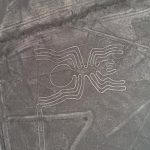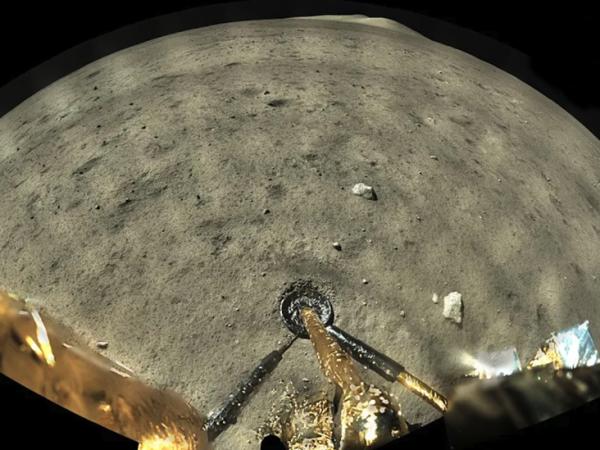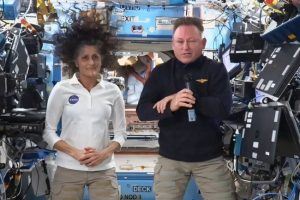A A team of scientists from China has found evidence of water molecules in samples of lunar soil collected and brought back to Earth by the Chinese spacecraft Chang’e-5. While the discovery of water on the Moon is not new, it is the first time it is found in its molecular formH2O, in physical samples and in a part of the Earth’s satellite where it was previously thought that water could not exist in that form, according to researchers.
(We suggest: The 3 phrases that Simone Biles repeats before competing and everyone should say)
The presence and distribution of water on the Moon are fundamental to understanding the Earth-Moon systemthe scientists write in their recently published article in the journal Nature Astronomy. However, despite extensive laboratory investigations and remote sensing surveys, the origin and chemical form of lunar water “have remained elusive,” continue researchers led by Xiaolong Chen of the Institute of Physics of the Chinese Academy of Sciences.
The article Collects evidence of a hydrated mineral enriched in water and ammonium molecules in Chang’e-5 lunar samples. “In this study We present the discovery of a hydrated mineral -(NH4)MgCl3-6H2O- in lunar soil samples returned by the Chang’e-5 mission, containing approximately one 41% (by weight) H2O“, the authors summarize.
(We recommend: NASA reveals a new source of energy that Thomas Edison would have predicted years ago)
The scientists They found a “clear prismatic plate-shaped crystal“—about the width of a human hair—was actually an “unknown lunar mineral” nicknamed ULM-1—whose chemical formula is (NH4)MgCl3-6H2O,” reported Tuesday.
In the samplesAmmonium was found, which acts as a stabilizer of water molecules. There is Three types of this liquid that may exist on the Moonaccording to Yuqi Qian, a planetary geologist at the University of Hong Kong, who was not involved in the study and quoted by . There are water molecules, the compound we know as H2O; its frozen form, ice; and a molecular compound called hydroxyla close chemical relative.
(Of interest: Caution! Plastic bottles may be unsafe if left in the heat)
The discovery now, according to scientists, isupon the first direct detection of molecular water in lunar regolith, Shedding light on a real form of water and ammonium molecules on the surface of the Moon, the state agency Xinhua reported a few days ago. The scientific team, as detailed in the articlerules out that terrestrial contamination or rocket exhaust gases are the origin of this hydratebased on their chemical and isotopic compositions and formation conditions.
Images taken by the Chang’e-5 spacecraft on its lunar mission
China National Space Administration
The findings also suggest that water molecules may persist in sunlit regions of the Moon in the form of hydrated salts. “The presence of ammonium indicates a more complex lunar outgassing history and highlights its potential as a resource for lunar habitability.“, the authors summarize.
Almost 2 kilos of lunar material
Chang’e 5 probe returned to Earth in December 2020 with 1.73 kilograms of regolith from the ‘Oceanus Procellarum’ crater, making China the third country to collect samples from the Earth’s satellite after the United States and the former Soviet Union.
(Suggested reading: Diamonds on Mercury? This is what we know)
Your analysis has allowed scientists to publish various findings in recent years and months. For example, In March 2023, another Chinese team led by Sen Hu published in Nature Geoscience the discovery of new remains of watera in impact crystals found in lunar soil by Chang’e 5.
As the publication recalled at the time, the surface water of that satellite – also found by NASA and Indian spacecraft – It has sparked interest in the scientific community due to its potential for use “in situ” by future space exploration missions.More recently, last February, another Chinese team announced the discovery of a new mineral on the Moon, Changesite, a kind of transparent and colorless columnar crystal, and a puzzling combination of silica minerals.
EFE













![[Img #74676]](https://thelatestnews.world/wp-content/uploads/2024/12/Laser-artificial-neuron-300x200.jpg)

Add Comment